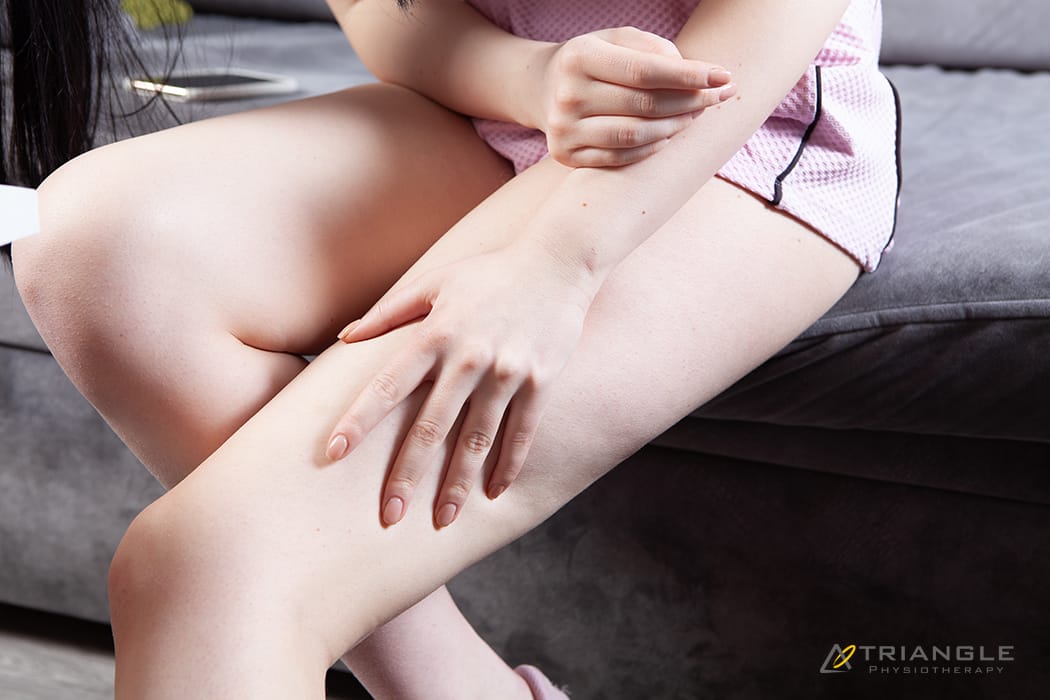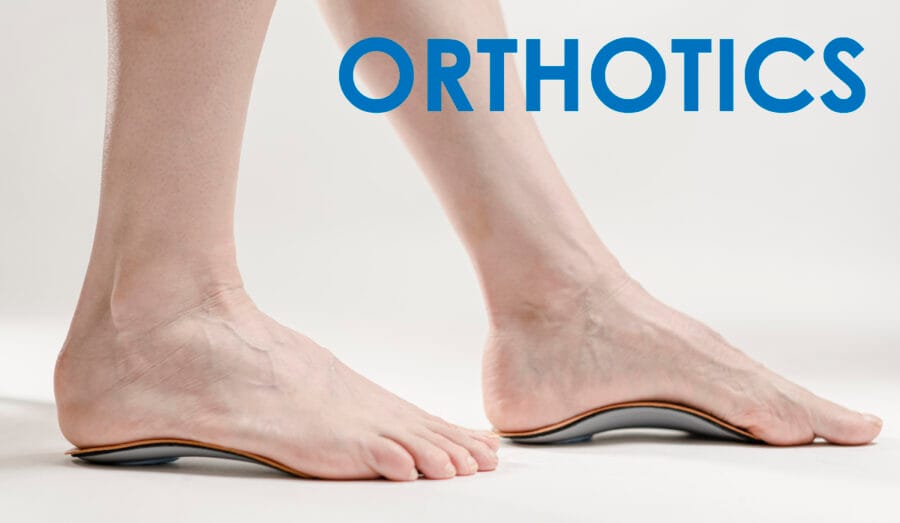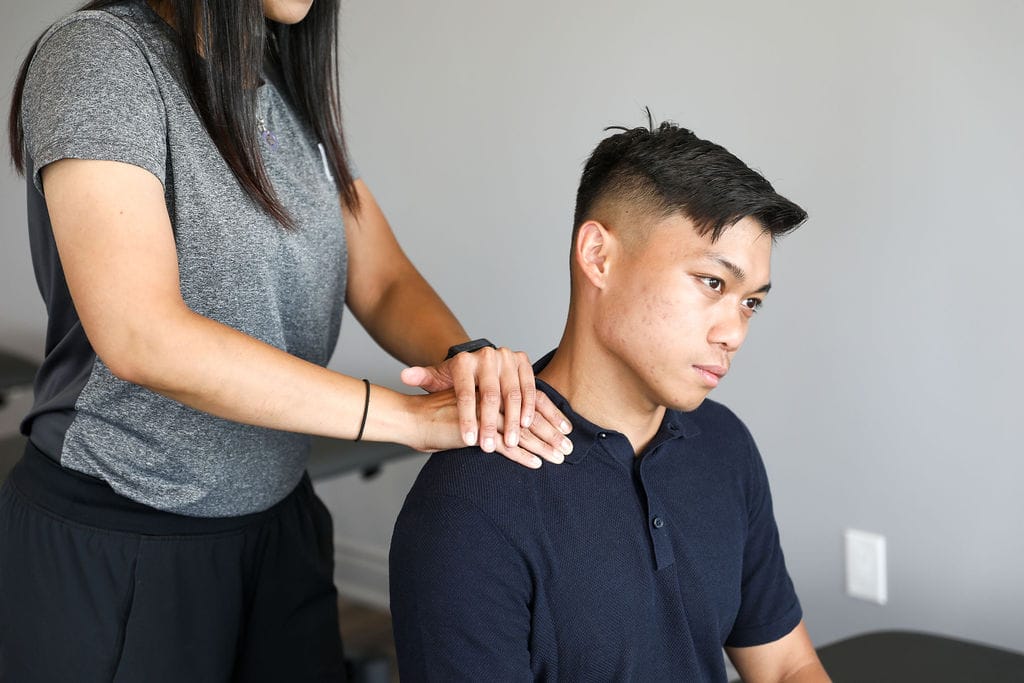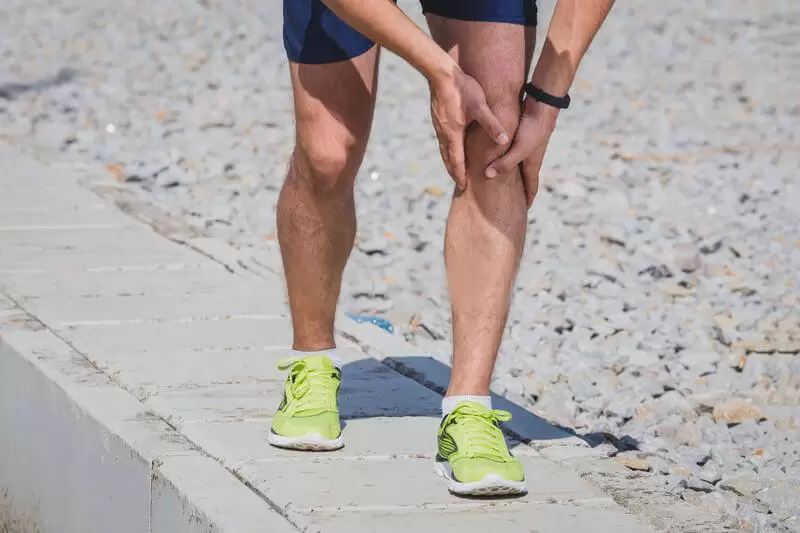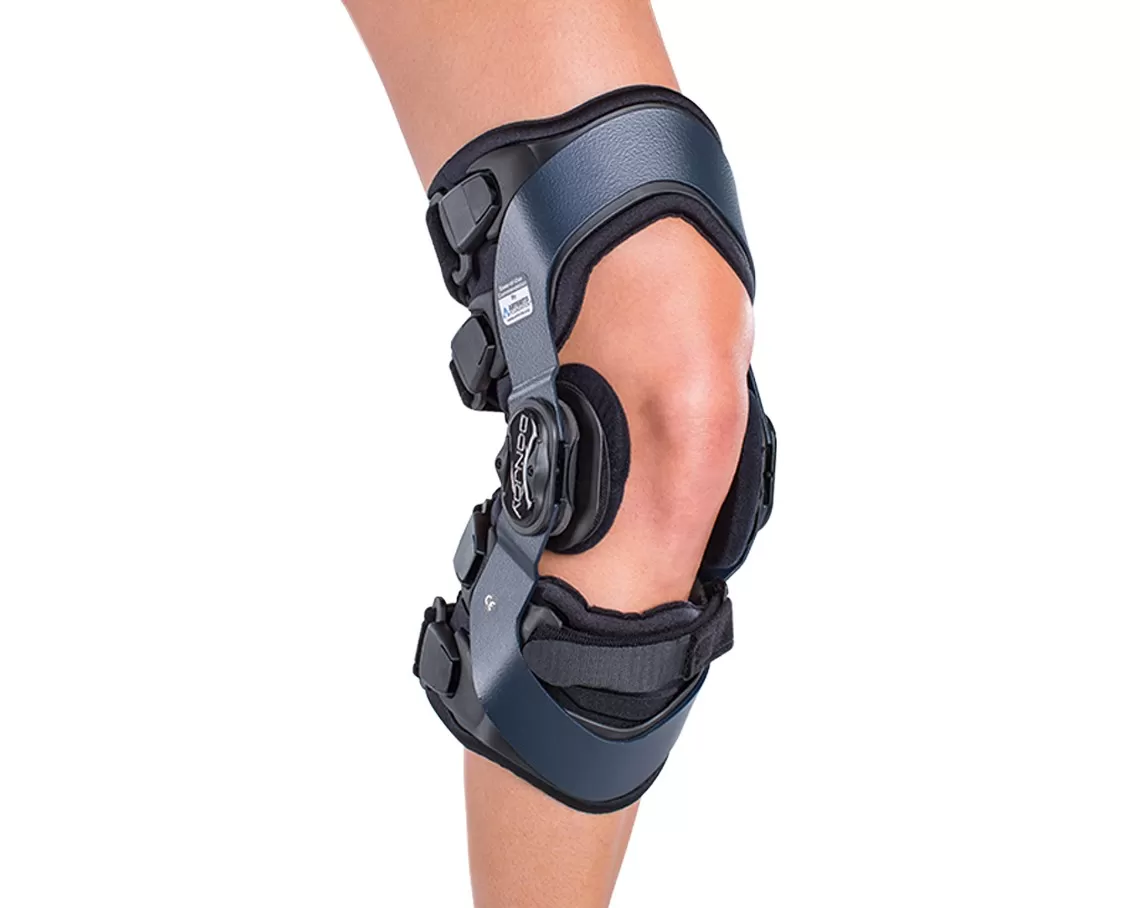Breastfeeding isn’t always the smooth, blissful experience it’s made out to be. For many new moms, blocked milk ducts can turn feeding time into a painful challenge. At Triangle Physiotherapy, we understand how frustrating this can feel – and more importantly, we know how to help.
Blocked ducts are common during lactation and can happen for many reasons – missed feeds, poor latch, tight bras, stress, or even bad posture. The result? A firm, tender lump in the breast that may cause pain, swelling, or reduced milk flow. Left untreated, this can lead to mastitis, a breast infection that can be far more serious.
That’s why early attention and a tailored treatment approach make all the difference.
What Causes Blocked Milk Ducts?
A duct becomes blocked when milk isn’t able to drain properly, causing a buildup. This might be due to:
- Infrequent or incomplete nursing or pumping
- Pressure from clothing or a carrier
- Poor posture during feeds
- Physical tension in the chest, shoulders, or upper back
Every mom’s body and routine are different – so identifying your root cause is the first step to effective treatment.
How Physiotherapy Can Help

Physiotherapy might not be the first solution that comes to mind, but it’s an incredibly effective, drug-free way to manage and prevent blocked ducts.
At Triangle Physiotherapy, our team focuses on more than just symptom relief – we focus on recovery, comfort, and sustainable feeding.
Here’s what our approach often includes:
1. Gentle Manual Therapy
We use soft tissue techniques and targeted massage to release the blockage and reduce inflammation. This helps ease the pain and support milk flow.
2. Therapeutic Ultrasound
This safe, non-invasive tool breaks down blockages and encourages drainage. Many moms feel significant relief after just one or two sessions.
3. Postural Support & Ergonomics
Feeding posture matters more than most realize. We guide you on optimal positions for nursing and holding your baby to reduce strain and improve milk drainage.
4. At-Home Self-Care Guidance
We’ll teach you how to manage symptoms between visits – whether it’s heat application, feeding techniques, or safe, effective massage.
Why Choose Personalized Care?
Blocked ducts don’t show up the same way for every person, and they don’t respond to a one-size-fits-all solution. Your feeding schedule, body mechanics, and stress levels all play a role. That’s why we take time to understand the full picture before building a care plan.
Some moms only need a few sessions. Others benefit from ongoing care – especially if blocked ducts are recurring or related to deeper muscular tension. We’ll tailor your support to your lifestyle, goals, and comfort.
You Deserve Comfort and Confidence
Breastfeeding is personal, and so is your care. Whether you’re struggling with a first-time blockage or dealing with ongoing issues, we’re here to help you feed your baby comfortably – and feel good doing it.
Book your consultation with Triangle Physiotherapy today and get the support you need to move past pain and enjoy nursing again.
Every journey to a new country comes with its own challenges – physical, emotional, and social.
At Triangle Physiotherapy, we believe that caring for your health means more than just treating pain. For many newcomers and refugees in Toronto, physiotherapy plays a crucial role in helping them rebuild, restore, and thrive in their new lives.
From stress-induced muscle tension to injuries sustained during migration or early work experiences, the physical toll of relocation is often underestimated. That’s why we offer care that’s not just effective – but personalized to every individual’s story, needs, and goals.
Unique Challenges Faced by Newcomers & Refugees
The path to settling in Canada isn’t always easy. Many people arrive after long flights, extended travel, or even physically dangerous circumstances. Once here, they may face:
- Lingering pain from old or untreated injuries
- Postural issues from long hours of travel or manual work
- Chronic stress that manifests physically in the neck, shoulders, or back
- Language barriers when accessing healthcare
- Lack of awareness about available support systems
- Mental and emotional strain that affects the body
At Triangle Physiotherapy Toronto, we understand these unique layers – and we tailor our treatment accordingly.
Why Personalized Physiotherapy Matters

A one-size-fits-all approach simply doesn’t work. Your body, your background, and your goals are unique – and your care plan should reflect that.
We focus on understanding:
- The physical impact of your migration journey
- Cultural comfort with therapy and bodywork
- Your daily routine, work type, and movement patterns
- Past medical or injury history
- Emotional stress and how it may be showing up in your body
Our Personalized Approach to Physiotherapy for Newcomers
Step 1: Comprehensive, Culturally Sensitive Assessment
We begin with a thorough evaluation, including:
- A conversation about your journey, stressors, and pain
- Review of any old injuries or chronic issues
- Functional movement tests to assess posture, strength, and mobility
- Multilingual support when possible, and patience always
Our goal is to meet you where you are – both physically and emotionally.
Step 2: A Customized Recovery Plan
Based on your assessment, we’ll create a treatment plan that may include:
- Manual therapy to release tension and improve mobility
- Exercises tailored to your physical demands (work, caregiving, etc.)
- Education on body mechanics and posture
- Pain relief modalities like ultrasound or TENS
- Resources for additional wellness or community care
Step 3: Ongoing Support for Lasting Recovery
As you settle into life in Toronto, your needs may evolve. We adjust your plan accordingly, tracking progress and ensuring you feel supported every step of the way.
The Benefits of Individualized Physiotherapy for Newcomers
- Faster Recovery from Stress & Injury
- Improved Body Awareness and Confidence
- Supportive, Respectful Care in a New Environment
- Tools to Stay Healthy in Work and Daily Life
A Safe Space to Heal and Grow
Whether you’re recovering from an old injury or simply trying to adjust to the physical toll of a new life, you don’t have to do it alone. At Triangle Physiotherapy Toronto, we’re proud to support newcomers and refugees with compassionate, expert care – one step at a time.
Book your assessment today and let us support your journey to a stronger, healthier future in your new home.
IT Band Syndrome (Iliotibial Band Syndrome) is a common condition among athletes and active individuals, characterized by pain on the outside of the knee. This pain is typically caused by inflammation of the IT band, a thick band of connective tissue running along the outer thigh from the hip to the shin.
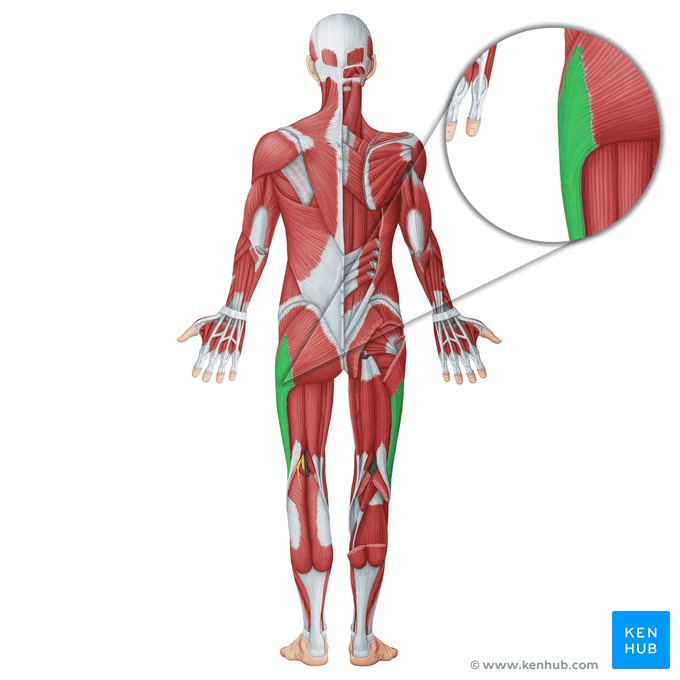
Understanding the causes, effective treatment strategies, and prevention methods can help you manage and avoid this frustrating condition. Let’s delve into what IT Band Syndrome is, how to treat it, and strategies to prevent it from recurring.
Causes of IT Band Syndrome
IT Band Syndrome often develops due to repetitive stress and overuse of the knee joint. Several factors can contribute to this condition:
- Overuse: Repeatedly performing activities that involve knee flexion and extension, such as running or cycling, can lead to IT band irritation.
- Biomechanical Issues: Abnormalities in your gait or foot mechanics, like overpronation or leg length discrepancies, can increase stress on the IT band.
- Muscle Imbalances: Weakness or tightness in the muscles of the hip, thigh, or calf can affect the alignment and function of the IT band.
- Improper Footwear: Wearing shoes that do not provide adequate support or cushioning can contribute to the development of IT Band Syndrome.
- Sudden Increase in Activity: Rapidly increasing the intensity or duration of physical activity without proper conditioning can strain the IT band.
Importance of Physiotherapy
Physiotherapy is a crucial component in both the treatment and prevention of IT Band Syndrome. A physiotherapist can help by:
- Assessing and Diagnosing: They will evaluate your movement patterns, muscle strength, and flexibility to pinpoint the underlying issues contributing to your symptoms.
- Developing a Treatment Plan: A tailored treatment plan may include exercises, manual therapy, and advice on activity modifications to alleviate pain and prevent recurrence.
- Education and Guidance: Physiotherapists provide valuable education on injury prevention, proper technique, and ways to incorporate exercises into your routine.
Key Principles of Physiotherapy
- Pain Relief: The initial focus is on managing pain and inflammation. This might involve rest, ice application, and anti-inflammatory medications.
- Gradual Loading: Gradually reintroducing activity is important to avoid further strain. This includes slowly increasing exercise intensity and duration.
- Muscle Balance and Alignment: Addressing any muscle imbalances and ensuring proper alignment can help reduce the stress on the IT band.
Strengthening Exercises
Strengthening the muscles around the hip and knee can help support the IT band and reduce the risk of future injuries. Effective exercises include:
- Clamshells: Lie on your side with knees bent and feet together. Lift the top knee while keeping your feet touching. This strengthens the hip abductors.

- Bridges: Lie on your back with knees bent and feet flat on the floor. Lift your hips towards the ceiling, then lower them back down. This exercise targets the glutes and hamstrings.
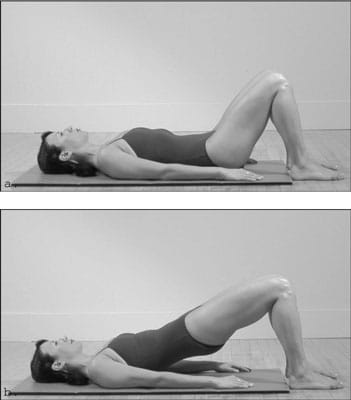
Neuromuscular Exercises
Neuromuscular exercises improve coordination and muscle function, which can aid in injury prevention and recovery:
- Single-Leg Squats: Perform squats on one leg to enhance balance and strength. Start with a small range of motion and gradually increase as strength improves.
- Step-Ups: Step onto a platform with one foot and then back down. This exercise helps improve the strength and control of the hip and knee.
Proprioceptive Exercises
Proprioceptive exercises help improve your body’s awareness of its position, which is vital for maintaining proper movement mechanics:
- Balance Board Exercises: Stand on a balance board and try to maintain stability. This enhances proprioception and ankle stability.
- Bosu Ball Work: Perform exercises such as squats or lunges on a Bosu ball to challenge your balance and coordination.
Incorporating Mobility
Maintaining and improving joint mobility is essential for overall function and injury prevention:
- Foam Rolling: Use a foam roller to massage and release tightness in the IT band and surrounding muscles.
- Dynamic Stretching: Incorporate dynamic stretches such as leg swings and hip circles into your warm-up routine to improve flexibility and range of motion. Try performing the static stretch for ITB in standing as well. Ensure to work on glute medius and hip flexors along with ITB. Learn to brace the core well. Avoid full/deep ROM exercises till you feel better. Using a half foam roller to squat down is better than squatting through pain.
Understanding IT Band Syndrome and implementing effective treatment and prevention strategies can help you manage this condition and maintain an active lifestyle. Physiotherapy plays a vital role in addressing pain, improving function, and preventing future issues. By focusing on strengthening, neuromuscular, proprioceptive exercises, and incorporating mobility work, you can support your recovery and reduce the likelihood of recurrence. Remember to follow safety tips and consult with healthcare professionals to tailor a plan that best suits your needs. With the right approach, you can overcome IT Band Syndrome and get back to enjoying your favorite exercises.
Are you ready to get that IT Band Injury resolved? Contact Triangle Physiotherapy to schedule an Initial Assessment and get on the road to recovery!
Our Toronto locations are conveniently located with easy transit access:
What Is Bell’s Palsy?
Bell’s palsy, also known as idiopathic facial palsy, is a sudden weakness or paralysis on one side of the face. It is caused by inflammation on the facial nerve, which is usually temporary.
What are the symptoms of Bell’s palsy?
- The most common symptom of Bell’s palsy is the sudden weakness or paralysis on one side of your face causing it to droop.
- Drooling.
- Eye issues such as excessive tearing or a dry eye.
- Altered taste.
- difficulty eating and drinking
- Sensitivity to sound.
- Pain in or behind your ear.
- Numbness in the affected side of your face.
- Dry mouth
What are the causes of Bell’s palsy and what Is the main cause of Bell’s palsy ?
Bell’s palsy is facial nerve paralysis of unknown cause but it’s often related to having a viral infection. Viruses that have been linked to Bell’s palsy include viruses that cause:
Some viruses which have been believed to be common Bell’s palsy causes are:
- Cold sores and genital herpes (herpes simplex)
- Chickenpox and shingles (herpes zoster)
- Mumps
- Flu
- Infectious mononucleosis (Epstein-Barr)
Other conditions that may cause Bell palsy are:
- HIV infection
- Lyme disease
- Middle ear infection
- Sarcoidosis
What is the best cure for Bell’s palsy and what happens If Bell’s palsy Is untreated?
Most people with Bell’s palsy fully recover even without treatment. But some medications or physiotherapy can help speed up Bell’s palsy recovery. Some studies showed that about one third of untreated Bell’s Palsy patients suffered from long term effects such as facial spasms and disfigurement, and chronic pain.
The best Bell’s palsy treatment will vary between individuals but most will be prescribed corticosteroids to reduce the facial nerve inflammation of the facial nerves. Some patients may be prescribed antiviral drugs like acyclovir to speed up the recovery process.
What Is The Best Treatment For Bell’S Palsy?
Bell’s palsy improves without treatment. Still, your healthcare provider may recommend one or more of these therapies for symptom relief and a faster recovery:
Another effective Bell’s palsy treatment is eye care which is crucial in protecting the eyes from injuries and irritants. If your eye does not close completely, the use of glasses or goggles is beneficial. An eye patch can be used at night.
Decompression surgery to ease nerve pressure eases pressure but it is rarely done because it may cause permanent nerve damage and loss of hearing.
Another beneficial treatment for Bell’s Palsy is Physiotherapy.
A registered physiotherapist can assist with providing education and support during recovery in order to reduce secondary complications.
- Electrical muscle stimulation is used to stimulate the nerve fibers in order to help maintain some of the strength, which then promotes faster recovery,
- Daily exercise regimen
- Soft tissue massage can be applied to the head and face to help with aches and help stimulate repair of innervation for the facial muscles.
Recovery from Bell’s Palsy
In general, people whose paralysis is less severe tend to start to improve with or without treatment after a few weeks, with complete recovery of facial function within six months. If symptoms start to improve within the first 21 days, chances are there will be complete recovery with no residual facial muscle weakness.
At Physiotherapy Oakville, we understand the importance of early intervention and personalized care in facilitating recovery. Scientific studies have shown that timely physiotherapy can enhance the recovery process for facial paralysis, minimizing residual muscle weakness and improving overall outcomes. By joining Physiotherapy Oakville, you gain access to expert physiotherapists who provide evidence-based treatments tailored to your specific condition, supporting a faster and more complete recovery.
What are the complications Of Bell’s palsy?
Some of the complications of Bell’s palsy are:
- Irregular regrowth of nerve fibers and irreversible damage to your facial nerve which can result in synkinesis. Synkinesis is a condition in which moving one part of your face causes involuntary contraction of another.
- Excessive eye dryness on your affected side, which can lead to eye infections or even vision loss.
- Some people don’t fully recover and are left with long term facial paralysis and drooping.
Bell’s Palsy versus Stroke
Cause
The cause of Bell’s palsy is uncertain but some viruses like herpes zoster, herpes simplex, and mumps have been believed to be connected to Bell’s palsy.
Stroke is caused by high blood pressure, heart disease, high cholesterol, previous stroke.
Diagnosis
Bell’s palsy does not require any specific testing. Your doctor may ask you to perform specific facial movements such as eyebrow raising, frowning, smiling, and eyes closing. At times, EMG or MRI may be conducted to rule out stroke.
Diagnosing strokes is dependent on several factors. Some imaging scans are used to assess the brain and its blood supply.
Treatment
Treatment of Bell’s palsy are corticosteroids and antiviral medications, pain medications, and physiotherapy.
There is a more complex approach in treating stroke and its treatment is dependent on the type of stroke.
Our More Locations
Physiotherapy Etobicoke | Physiotherapy Oakville | Physiotherapy North York | Physiotherapy Toronto | Physiotherapy Lawrence Park | Physiotherapy Mississauga | Physiotherapy Queens Quay | Physiotherapy Mississauga Erin Mills | Physiotherapy Liberty Village
Click HERE to book an appointment with a physiotherapist at one of our eight locations.
- Physiotherapy Etobicoke – Triangle Physiotherapy Etobicoke
- Oakville Physiotherapy Clinic – Triangle Physiotherapy Oakville
- Physiotherapy North York – Triangle Physiotherapy North York
- Mississauga Physiotherapy Clinics – Triangle Physiotherapy Mississauga
- Downtown Physiotherapy Clinics – Triangle Physiotherapy King West
- Uptown Physiotherapy Clinics – Triangle Physiotherapy Lawrence Park
- Physiotherapy Clinic Downtown Toronto – Triangle Physiotherapy Queens Quay
- Physiotherapy Clinics Mississauga – Triangle Physiotherapy Erin Mills
“Addressing Bell’s Palsy and related back pain requires a comprehensive approach, including specialized stretches and physiotherapy. Triangle Physiotherapy offers expert services across the GTA, including Physiotherapy in Etobicoke, Oakville, North York, Toronto, Lawrence Park, Queens Quay, Erin Mills, Mississauga, and Liberty Village. Our experienced physiotherapists can help you manage symptoms and improve your quality of life through personalized treatment plans.”
What are orthotics?
Orthotics are custom made inserts that are worn inside your shoe to control abnormal foot function.
Orthotics solve a number of biomechanically related problems, for example, ankle and knee pain, pelvis, hip, spinal pain. This is achieved by preventing misalignment of the foot, which significantly alters the way in which the bones move within their joints.
Orthotics work for the feet the same way prescription glasses work for the eyes.
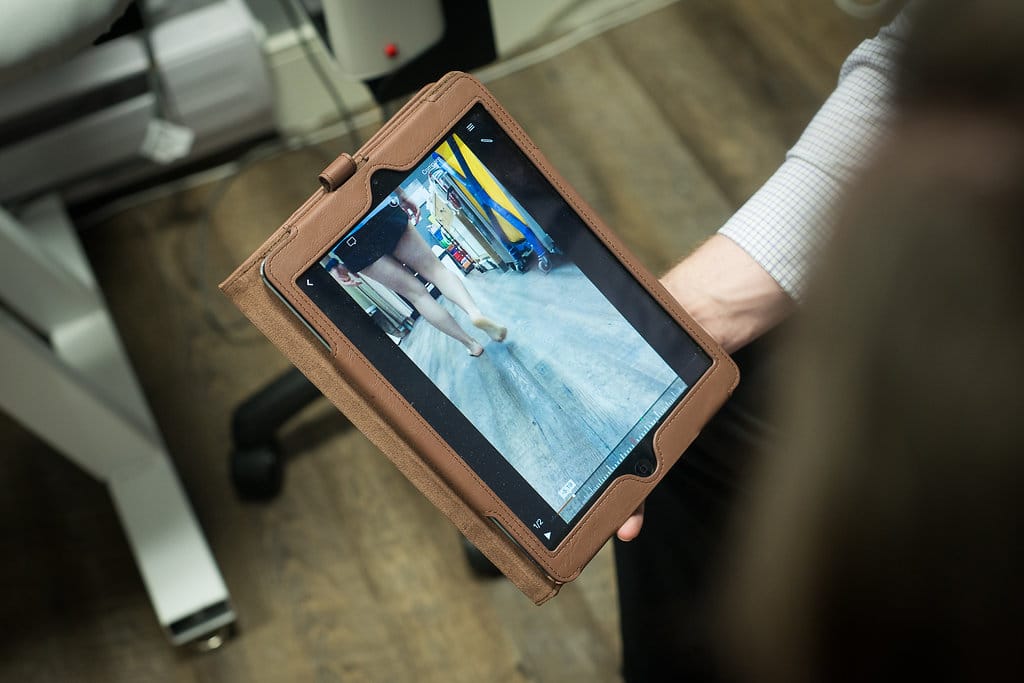
Who can benefit from orthotics?
Custom orthotics can be used for all ages and for a variety of activities and can be made to fit any type of shoe.
Where can I get the best custom orthotics?
The best custom orthotics can be purchased from a clinic where a chiropodist or qualified health professional conducts an assessment and a 3D scan of your feet to determine the best orthotics for you. The 3D Scan is then sent to a lab where the scan is used to manufacture your orthotics.
Triangle Physiotherapy has qualified health practitioners that can assess you and recommend the best custom orthotics for you.
How can Orthotics correct foot conditions?
The best custom orthotics can:
- Help balance pressure placed on the feet by redistributing the weight appropriately
- Help stabilize the heel
- Support the arch of the feet
- Provide cushioning to delicate and inflamed areas of the feet that arise from too much walking, jogging, running, etc.
What is a knee brace and how can it help me?
A knee brace can help support and stabilize an unstable knee due to injury or osteoarthritis. The best knee brace will offer the support you need in order to balance and evenly distribute your weight in order to have a more comfortable walk or run.
What conditions can a knee brace help with?
Whether it’s a knee sprain, arthritis, torn ACL, runner’s knee, knee instabilities or knee discomfort, the best knee braces help support and manage pain.
When should I start wearing a knee brace?
Once you start experiencing knee pain or discomfort or find that the knee is unstable while walking or running or after you have had knee surgery , book an appointment with one of our health practitioners who can assess you and recommend the best knee brace for you.
“Custom orthotics and knee braces can significantly improve mobility and reduce pain. Triangle Physiotherapy offers expert services across the GTA, including Physiotherapy in Etobicoke, Oakville, North York, Toronto, Lawrence Park, Queens Quay, Erin Mills, Mississauga, and Liberty Village. Our experienced team can help you find the best solutions to support your foot and knee health, ensuring a personalized approach to your treatment.”
Should I go to a physiotherapist after a car accident?
If you met with a car accident and having problems related to the mobility of your body or if it causes obstacles to function properly and efficiently then you should definitely go for Physical Therapy.
Physical therapists are musculoskeletal experts and may help cure the underlying musculoskeletal injuries that may have occurred after meeting with a car accident. At Triangle Physiotherapy, our Physical Therapists will assure a one-to-one session where they will conduct an extensive whole-body analysis with a target of developing a customized treatment and detailed physical therapy programs which suit best to your condition and individual needs.
What can a physiotherapist do to help after a car accident?
The goal of physical therapy is to help you recover physically and strengthen damaged muscles and tissues.
A Few physical therapy exercise programs would include:
- Manual therapy to mobilize joints, decrease scar tissue, reduce inflammation and enhance healing of tissue.
- Custom exercises to address types of pain like neck and shoulder pain, back pain, spine dysfunction, or weakness.
- Postural training to resolve pain in the neck, shoulders, and back.
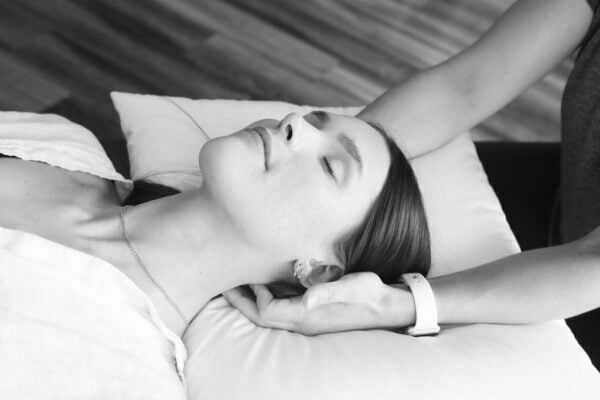
COMMON TYPES OF INJURIES
The list of injuries if you meet with a car accident are as follows:
- Whiplash
- Headaches
- Back Pain
- Neck Pain
- Shoulder Pain
- Knee Pain
What are the common symptoms related to WHIPLASH?
Common symptoms related to whiplash include:
- Stiffness to neck, arms, upper back, and the face.
- Numbness into arms, neck, and upper back.
- Headache, dizziness, nausea.
- Feelings of general weakness.
- Altered and disturbed sleeping habits and patterns.
- Difficulty with concentration.
Is it important to get physiotherapy as soon as possible after a car accident?
Although you may feel the immediate onset of pain or symptoms of injury, these symptoms may bring forth pain and mobility problems over the long haul.
Suppose if you met with a car accident, one may wonder that why is it necessary to get treated with Physiotherapy after an accident? If you’re considering Physiotherapy after a car accident, there are many reasons that you may want to begin or continue with the treatment.
The doctor will recommend that you receive Physiotherapy and you will realize the benefit of rehabilitation after a car accident. You may realize on your own that you can benefit from rehabilitative treatment.
Here’s why you should start Physical Therapy after a car accident:
- Physical Therapy After a Car Accident Can Help You Recover Faster
Going through Physical Therapy after a car accident can help you speed up your recovery time. It can help the body recover its lost strength so that you can reduce the amount of time it takes to improve and fully recover from the injuries caused by car accidents. Time and again patients don’t realize how bad their car accident injuries are until they return to their day-to-day activities.
If you are looking for a physiotherapist to help you with your injuries, our rehabilitation facility is one of the best physiotherapy clinics:
- Physical Therapy Can Help You Recover Better and Prevent Long-term damage
In order to help you recover faster, Physical Therapy programs ensure a better outcome after taking good care and following Physical Therapy exercises. It can also help you or prevent the long-term effects of your injuries like chronic pain and migraines. Unfortunately, car crashes can cause nagging damage if the patient’s injuries are not addressed right away. If you begin physical therapy immediately after your car accident, it’s more expedient to live a pain-free life for years.
- Boosting Mental Health and Improving Quality of Life
Some issues can create a problem after years of being a victim of a car accident and this can seriously affect the quality of life of a person. Physical therapy relieves these issues before becoming a serious health concern for an individual.
- Avoiding Surgery
Every so often injuries caused by car accidents can even require surgery, most injuries or a type of wear and tear but a few injuries, if left rampant, can lead to surgery and costly hospital bills. It is always advised to immediately check-up with a professional for the treatment. This will help with any claims you may wish to make later on. Physical therapy treatment is a much more cost-effective solution to recovery.
There are multiple benefits of physiotherapy and that’s why people are opting for this line of treatment for recovery and overall well-being.
Steps to take after a car accident and a few advantages of Physiotherapy:
- The Type of Injury
Car accident injuries can affect your recovery time and the time period that takes to complete your treatment. One of the most common car accident injuries is whiplash. A whiplash injury occurs when the force of the accident causes your head and neck to jerk violently forward and backward. This can cause the muscles and tendons in your neck to stretch outside their normal range of motion. Whiplash can also affect the spinal column in your neck and disc injuries can be serious. Depends on the intensity of the whiplash, it can take a few months to recover and get the accurate motion of the neck as it was before.
2. The Severity of the Accident
It is more likely to sustain a moderate to severe injury in a more serious car accident, even the smallest of the injury. A more severe accident can cause consequential harm to your body even if you are taking all precautions of car safety like wearing the seatbelt and the airbag deploys. More serious injuries like a dislocated knee or a broken foot can impact your daily routines.
3. Any Previous Injuries
A previous injury can leave behind scar tissue, that impacts how your body heals the new injury. Physiotherapy often takes longer if you have previous injuries, especially if they occur in the same area.
Few factors that effect are:
- The severity of the injury
- Location of the injury
- Patient’s current state of health
- Patient’s treatment goals
- Rate of progress
How can Physiotherapy help if you’ve met with a car accident?
Physiotherapy helps reduce the pain and discomfort usually felt after a car accident injury. A lack of physical activity when recovering from an injury can actually cause stiffness, which can lead to more discomfort when trying to return to your daily activities, so you should always try to keep your body in motion.
“Recovering from a car accident requires targeted physiotherapy to restore mobility and reduce pain. Triangle Physiotherapy offers expert care across the GTA, including Physiotherapy in Etobicoke, Oakville, North York, Toronto, Lawrence Park, Queens Quay, Erin Mills, Mississauga, and Liberty Village. Our experienced team provides personalized rehabilitation plans to help you recover effectively and regain your quality of life.”
We’ve all heard how good running can be for you. Running helps to lose weight, prevent disease, lower stress, strengthen joints, manage blood pressure… the list goes on and on. But there’s a suprising problem you may be experiencing if you’re a long distance runner. It’s called leaky gut. I know, it sounds gross, but if you’re a runner then it’s something to keep in mind. How do you know if you have a leaky gut? Read on to find out common symptoms and how to treat it.
What is leaky gut, anyway?
Leaky gut, also known as intestinal permeability, is a dysfunction in the lining of our intestine. Our intestinal walls are only one cell layer thick. Their job is to absorb nutrients and prevent bacteria from getting into our bloodstream. When the cells of the gut lining start to separate and let bacteria enter the bloodstream, we get what we call leaky gut. This can lead to all kinds of health issues, including:
- allergies
- asthma
- autoimmune disease
- eczema
- psoriasis
- rheumatoid arthritis
- food sensitivities
- irritable bowel syndrome
- Crohn’s disease
- ulcerative colitis
- thyroid problems
- acne
- nutrient deficiencies
- depression and other mood disorders
Also read, Physiotherapy Treatment in Mississuaga
How does running lead to leaky gut?
It’s actually not just running that can lead to leaky gut. Powerlifters and people who do cross-fit are at risk, too. Same goes for anyone who does vigorous strength training or heavy exercise. The gut lining becomes more permeable due to the amount of stress put on your body by these types of activity. High physical stress leads to higher metabolic demands. Endurance sports do appear to have the most profound effect on leaky gut though, which is why you might be more concerned if you’re a marathon runner, cyclist, or triathlete.
When you exercise, plant-derived carbohydrates are digested and fermented by the gut. This can create some harmful byproducts that play a role in creating leaks in your gut. Once you have a leaky gut, toxins are more easily able to cross from your intestines into your bloodstream.
Also read, Physiotherapy Treatment in Oakville
Endurance exercise can also increase our secretion of pro-inflammatory cytokines. This means that more inflammation is happening in the gut, which can throw off the balance of good bacteria versus bad bacteria in the intestines.
If you know me, you know I don’t like talking about health issues without some scientific studies to back up what I’m saying. So let’s take a look at one. Researchers looked at LPS (lipopolysaccharide) levels in athletes. They chose to look at LPS because it is a toxin found in bacteria. They measured LPS from blood samples of 29 athletes before, immediately after, one hour after, two hours after, and 16 hours after a triathlon. What they found was that LPS in the blood increased immediately after the race. But guess what? LPS was even higher than that one hour later. This demonstrated that there was an increase in leaky gut both during and after intense exercise.
I think I might have a leaky gut… now what?
Don’t hang up your running shoes just yet, folks. There might be a solution to those leaks in your gut. Remember how I mentioned that the balance between good and bacteria in the gut can get thrown off? Well, one way to help restore that balance is by taking probiotics. Probiotics are known as the good, healthy bacteria that we want and need in our gut. There are many different strains of probiotics. The two that have been shown to be most helpful with leaky gut is called Lactobacillus and Bifidobacterium. These strains help cells of the intestinal wall to tighten up the gaps between them.
A study demonstrated that probiotic supplements reduced LPS levels in the blood. This led to less leaky gut as well as an increase in the amount of time it took to reach fatigue while exercising in hot temperatures. This means that probiotics could actually help to improve athlete performance, too!
If you are a runner and suspect you may have a leaky gut, don’t wait until deteriorating health issues come along. Act now by calling the clinic to book your appointment with Dr. Corina Kibsey, ND today.
Runners often face various issues that can benefit from targeted physiotherapy to prevent injuries and improve performance. If you need professional physiotherapy care, consider visiting clinics in physiotherapy Etobicoke, Oakville, North York, Toronto, Lawrence Park, Queens Quay, Erin Mills, Mississauga, and Liberty Village. These clinics offer specialized services tailored to the needs of runners, helping them stay healthy and achieve their fitness goals.
Our knees support the weight of our bodies with each step we take. When we begin to experience knee pain, it can be very debilitating, especially if the pain is severe. Some common causes of knee pain are: joint strain or damage, patellar maltracking, obesity, poor foot biomechanics, and many others. In some cases, severe osteoarthritis (OA) can be the cause of the knee pain. While exercises are extremely beneficial in building muscular support and managing the effects of the OA, a knee brace can be a good intervention to provide support and delay any surgical intervention. It can help to reduce swelling and pressure on the joints and can shift weight away from the damaged and painful areas of the joint. This can significantly improve a person’s mobility by decreasing their pain.
What is Osteoarthritis?
Osteoarthritis (OA) is the most common joint condition. At its core, it is the deterioration of the cartilage which lines our joints and makes movement fluid and pain-free. While mild OA is a normal age-related change, severe OA involves a significant reduction in the amount of lubricating fluid (known as synovial fluid) within the joint. This can cause significant pain with movement, stiffness, and imbalance because of a more bone-on-bone type of feeling.
Also read, Best Physiotheraoy clinic in Mississauga
Knee brace for Osteoarthritis
As mentioned above, a knee brace can be a good management option for dealing with the effects of OA. A good knee brace will offer the support you need in order to balance and evenly distribute your weight in order to have a more comfortable walk or run. Material used to make braces can be plastic, metal, or sometimes composite materials. In addition, synthetic rubber is used for positioning and padding. It’s made in way so that your skin can breathe while your knees are supported.
Also read, Best Physiotherapy Clinic in Oakville
Types of knee braces in osteoarthritis
There are three styles of braces: Basic, Compression and Unloader for three different levels of support.
- Basic braces are for those who suffer from mild pain that worsens with activity and motion. Most people wear them while exercising or walking/running for long periods of time.
- Compression sleeves/advanced braces provide support for moderate osteoarthritic pain. They are generally worn during exercise in order to keep the joints warm and hold the knees in proper alignment.
- Unloader braces are for severe osteoarthritis. They are worn when a person is suffering from severe pain due to their knee OA and will physically unload the joint, causing less pressure to go through it.
We at Triangle physiotherapy will assess you knee joints and develop a complete treatment plan for you. Our expert physiotherapists can help you choose the correct knee brace to manage your OA. Book your appointment now and feel some relief so you can get back to your normal life as soon as possible!
Visit Here: http://www.trianglephysiotherapy.com
Using a knee brace can help manage osteoarthritis pain and improve mobility, but combining it with physiotherapy provides the best results. For personalized physiotherapy care, consider clinics in physiotherapy Etobicoke, Oakville, North York, Toronto, Lawrence Park, Queens Quay, Erin Mills, Mississauga, and Liberty Village. These locations offer specialized treatment plans to support knee health and enhance your quality of life.
- Bones and joints
- Ligaments and tendons
- Muscles
- Nerves
- Blood vessels
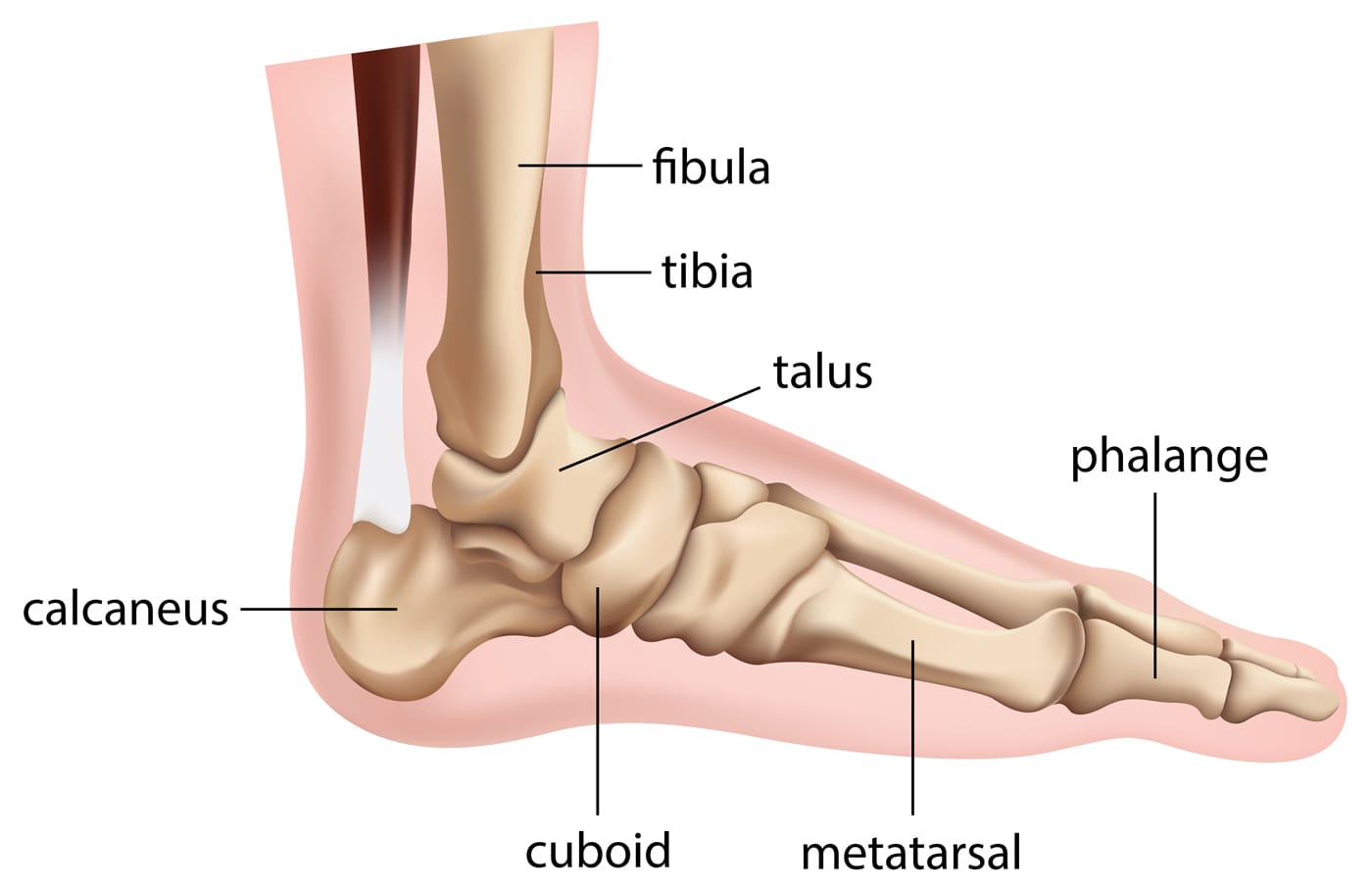
Ankle bones
The ankle joint consists three bones: The ankle bone (Talus), shin bone (Tibia), which holds the Talus at the lower end along with a parallel thinner bone (Fibula) and the heel bone (calcaneus). The talus has a socket-like structure which allows it to work like a one-directional hinge.
Aslo read, Physiotherapy Clinic in Etobicoke
Ligaments and Tendons
Ligaments and Tendons serve similar functions but in slightly different ways. While they are both referred to as “soft tissue” structures, ligaments attach bones to bones while tendons attach muscles to bones. Both of them are made of collagen fibers.
Muscles
Muscles work by stretching and contracting, which allows us to walk, run and jump. Below are some of the most prominent muscles of the lower leg:
- The peroneals (peroneus longus and peroneus brevis) are located on the outside edge of the ankle and are mainly responsible for bending the foot down and out.
- The calf muscles (gastrocnemius and soleus) connect to the calcaneus by the Achilles tendon. When the calf muscles tighten, they bend the ankle down.
- The tibialis posterior muscle supports the arch of the foot and helps turn the foot inward.
- The tibialis anterior pulls the ankle upward.
Also read, Physiotherapy Clinic in Mississuaga
Nerves
The nerves on the outer edge and front part of the ankle control muscle movement and provide sensation to the top and outside edge of the foot.
Blood Vessels
There are many arteries which supply blood to the ankle such as the dorsalis pedis, tibial artery, etc. Without adequate blood supply, the muscles of the ankle would not be able to function and would cause significant impairments.
We have 6 clinics located across the GTA: Etobicoke, Oakville, Mississauga, North York, and Toronto (King Street West and Yonge Street. If you are suffering from foot or ankle problems you may benefit from treatment. Don’t suffer any longer! Call or email us today and we will be happy to answer all of your questions.
You can book an appointment for Ankle Anatomy: Click here to book an appointment
Understanding ankle anatomy is crucial for preventing injuries and ensuring proper treatment. If you need expert physiotherapy services to help manage ankle conditions or injuries, consider visiting clinics in physiotherapy Etobicoke, Oakville, North York, Toronto, Lawrence Park, Queens Quay, Erin Mills, Mississauga, and Liberty Village. These locations provide comprehensive care and customized treatment plans to support your recovery and maintain ankle health.

Some common winter sports injuries:
1) Separated shoulders
2) Knee Sprains
3) Torn ligaments
4) Pulled muscles
5) Fractures
Also read, Etobicoke Physiotherapy Clinic
Exercising alone isn’t enough to achieve good health if you’ve already had an injury. It’s important to address injuries before they worsen and become more difficult to manage. At Triangle Physiotherapy, we promote active treatment programs that emphasize exercise to encourage client participation & independence.
Overcoming winter aches and pains:
Sometimes, a change in the weather could cause dormant aches to become more apparent. Joint pain can occur anytime throughout the year, but in the cold and wet months of the winter, you may find it harder to cope with.
A visit to a physiotherapist can help to keep you moving forward in a pain-free manner.
- Avoid excess twisting and forward bending. Bend the knees and keep the back as straight as possible when you are lifting.
- Make sure that you are using proper techniques and good body mechanics to help you avoid shoulder and low back injuries can be avoided.
- Don’t let the cold weather put you off – bundle up and be careful in wet or icy conditions.
- Exercising regularly will help reduce pain within your joints and help prevent other health issues.
- Also, ensure that you don’t overdo exercise if you are new in the sphere. Make sure you warm up with a brisk walk or gentle jogging.
Also read, Physiotherapy Treatment in Oakville
When our body is cold, it restricts the amount of blood it sends to our extremities, like our hands and feet, so that it can focus on supplying vital organs (like the heart and lungs) with blood. This means that we lose less heat from blood circulating near the surface of the skin, and also means that the joints get less blood. This can cause delayed healing and an increased insensitivity to pain.
To answer all of your queries in detail, we, at Triangle Physiotherapy thoroughly assess you and create customized treatment programs that address each individual’s needs. There are many people who feel depressed during the winter months, which can increase their sensitivity to pain. Don’t let your passion for living a pain-free life take a back seat during the winter season!
Triangle Physiotherapy is coming up with a new health campaign called #JoinTheMovement. By participating in this movement, you will notice a significant difference in your overall health awareness and awareness of what a Physiotherapist can do for you.
So, what are you waiting for? For more information on our services, visit our pages on facebook, and instagram
Winter can increase the risk of slips and falls, making physiotherapy essential for recovery and injury prevention. If you are looking for expert physiotherapy services, there are reputable clinics in physiotherapy Etobicoke, Oakville, North York, Toronto, Lawrence Park, Queens Quay, Erin Mills, Mississauga, and Liberty Village. These clinics provide specialized care and tailored treatment plans to help you stay safe and active throughout the winter season.
